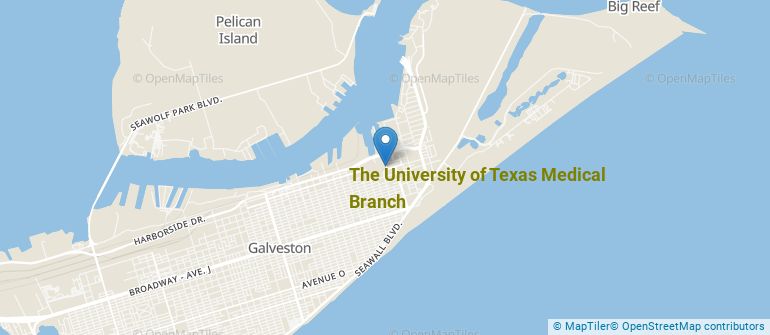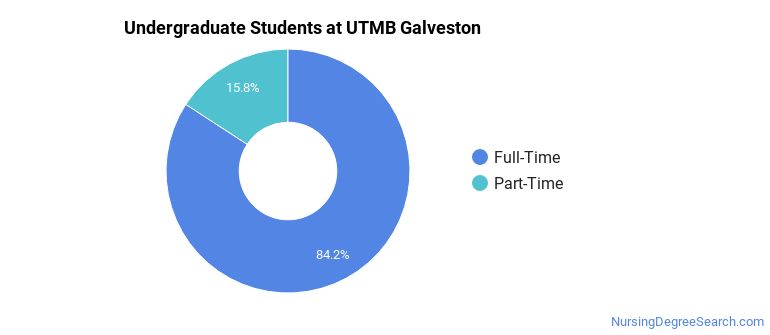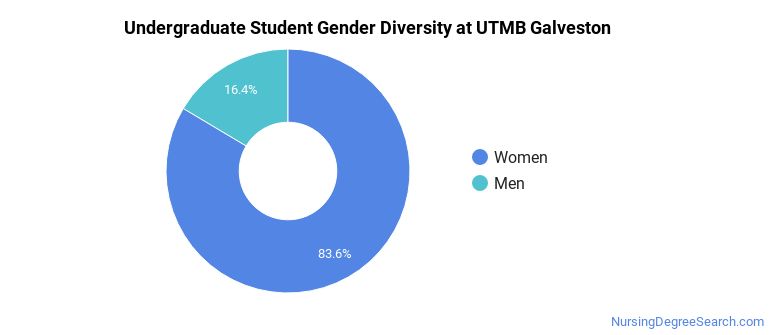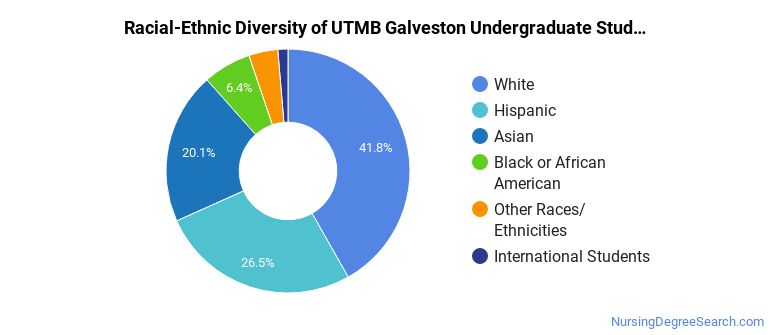The University of Texas Medical Branch Nursing Programs
The University of Texas Medical Branch is a public institution situated in Galveston, Texas. The surrounding area of the school is a good match for students who enjoy city life.
Where Is The University of Texas Medical Branch?

Contact details for UTMB Galveston are given below.
| Contact Details | |
|---|---|
| Address: | 301 University Blvd, Galveston, TX 77555-0129 |
| Phone: | 409-772-1011 |
| Website: | www.utmb.edu |
How Do I Get Into UTMB Galveston?
You can apply to UTMB Galveston online at: https://www.utmb.edu/enrollmentservices/resources/admissions
Can I Afford The University of Texas Medical Branch?
The University of Texas Medical Branch Undergraduate Student Diversity

There are also 2,750 graduate students at the school.
Gender Diversity
Of the 596 full-time undergraduates at UTMB Galveston, 16% are male and 84% are female.

Racial-Ethnic Diversity
The racial-ethnic breakdown of The University of Texas Medical Branch students is as follows.

| Race/Ethnicity | Number of Grads |
|---|---|
| Asian | 120 |
| Black or African American | 38 |
| Hispanic or Latino | 158 |
| White | 249 |
| International Students | 8 |
| Other Races/Ethnicities | 23 |
The University of Texas Medical Branch Nursing Concentrations
The table below shows the number of awards for each concentration.
| Major | Bachelor’s | Graduate Certificate | Master’s | Doctor’s | TOTAL |
|---|---|---|---|---|---|
| Registered Nursing | 312 | 0 | 0 | 0 | 312 |
| Family Practice Nurse/Nursing | 0 | 10 | 150 | 0 | 160 |
| Nursing Practice | 0 | 0 | 0 | 24 | 24 |
| Nursing Administration | 0 | 0 | 20 | 0 | 20 |
| Nursing Science | 0 | 0 | 0 | 7 | 7 |
| Clinical Nurse Leader | 0 | 0 | 6 | 0 | 6 |
| TOTAL | 312 | 10 | 176 | 31 | 529 |
References
*The racial-ethnic minorities count is calculated by taking the total number of students and subtracting white students, international students, and students whose race/ethnicity was unknown. This number is then divided by the total number of students at the school to obtain the racial-ethnic minorities percentage.
- College Factual
- National Center for Education Statistics
- Image Credit: By Nsaum75 under License
More about our data sources and methodologies.
